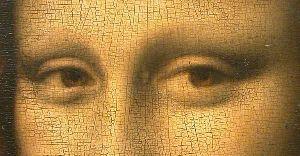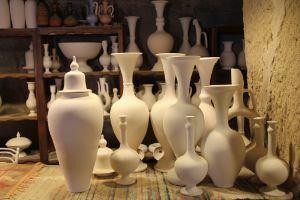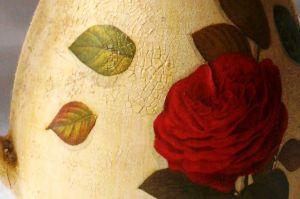False aging: the craquelure
Post from EditorialsHave you ever seen an old picture? The dense network of cracks is called craquelure and the technique of aging this reproduces in called craquelure.
What is the Craquelure technique
 Have you ever looked carefully at an old picture? Well, the most attentive of you will have noticed that most of the time the canvas is covered with a dense network of small cracks: this phenomenon is called craquelure and enhance the charm of the work related to the passage of time.
Have you ever looked carefully at an old picture? Well, the most attentive of you will have noticed that most of the time the canvas is covered with a dense network of small cracks: this phenomenon is called craquelure and enhance the charm of the work related to the passage of time.
Towards the end of the eighteenth century, when the tendency was to decorate with objects with a strong echo of the ancient, was born the technique called Craquelure, which reproduced on different types of surface the cracks typical of paintings. A curiosity: among the various techniques, the best known was the one consisting in gluing fragments of different sizes of egg shell on the surface to grow old and then treat it with shellac to highlight the small joints.
Today these cracks to art are achieved through the use of specific cracking products: the market offers, as always for decorative techniques, a wide range of products that allows even the option to choose the requirements that the cracking will have.
I think the best way to learn something is to apply it practically, so here's a project not particularly complicated to learn about the Craquelure technique combined with decoupage.
Craquelure for a ceramic jug
 Wood, MDF, glass, ceramics: there are many areas on which you can apply this aging technique, of course not in the same way. In the case of a plate in glass, for example, you need to work on the object upside down while wood requires special attention in the preparation of the bottom and the coloring, to ensure that the job will last.
Wood, MDF, glass, ceramics: there are many areas on which you can apply this aging technique, of course not in the same way. In the case of a plate in glass, for example, you need to work on the object upside down while wood requires special attention in the preparation of the bottom and the coloring, to ensure that the job will last.
With this project we will realize a decoration on a rough ceramic jug: you can buy rough objects to decorate - called cookies because cooked only once - at the pottery workshops or at the more equipped hobby and fine arts shops.
Here is the list of materials needed for the job:
- Ivory acrylic paint;
- Decoupage paper;
- Acrylic glue;
- Cracking paint in two components;
- Flat brushes of various sizes;
- Arabic gum;
- Fixative water. First of all, dust your jug to ensure that the acrylic color dry without creating bubbles: if you have the acrylic plaster or the primer, to ensure that the paint is given in a more uniform way, combine it with acrylic to pass for the first of two coats of color. In this way, the color will take on a homogeneous and compact way.
First of all, dust your jug to ensure that the acrylic color dry without creating bubbles: if you have the acrylic plaster or the primer, to ensure that the paint is given in a more uniform way, combine it with acrylic to pass for the first of two coats of color. In this way, the color will take on a homogeneous and compact way.
After the paint dryed, proceed normally with your decoupage: cut out carefully the images you have chosen, using small scissors and, if necessary, a utility knife. I chose these red roses for the beautiful contrast on the light background. Glue them again and let the jug dry: so far no substantial news. This is the time to apply the cracking paint, according to the time and manner specified on the packaging: the more skilled of you, before applying the paints, can create chiaroscuro near the leaves, following the trend of floral patterns, using an acrylic umber, a retardant medium and a brush to retouch. In this way you will give to your work an even more ancient and refined look. Once the cracking paints have dryed, give a coat of matt fixative.
This is the time to apply the cracking paint, according to the time and manner specified on the packaging: the more skilled of you, before applying the paints, can create chiaroscuro near the leaves, following the trend of floral patterns, using an acrylic umber, a retardant medium and a brush to retouch. In this way you will give to your work an even more ancient and refined look. Once the cracking paints have dryed, give a coat of matt fixative.
The drying is a critical step in the craquelure: it is precisely at this stage, in fact, that the cracks are formed and therefore you need to know especially what not to do! Do not force the timing of the drying process by using a hair dryer on the decorated object: it is a mistake that many people do not know, perhaps, that in this way the cracks take on strange shapes or, in the worst case, could not be formed. If there are no alternatives to the use of the dryer, use a gentle stream of cold air.

In the middle of this delicate phase, ie when the surface is dry to the touch but slightly sticky, give an even coat of arabic gum using a flat brush and wait for the item to dry completely. After 48 hours, give a coat of water-based paint, which will highlight the cracks, that will be enhanced by the use of wax.
79874 REGISTERED USERS










